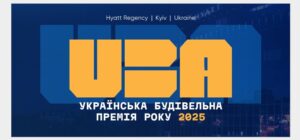
The week of December 8–14 was marked by a cautious recovery for the crypto market after a sharp decline in November. Bitcoin stabilized in the $89,000–92,000 range, partially recovering from last month’s drop from above $120,000, but it is still far from new highs.
According to several market reports, Bitcoin fell to the $83,800–88,000 range at the beginning of the week, then rebounded to ~$94,000, and stabilized just below $90,000 by the weekend. On December 8, Binance recorded BTC at around $91,900 (+3.1% per day) with a daily range of $87,700–92,300. On December 14, according to Binance and Coindesk, Bitcoin traded near $88,800–89,200, losing about 1.5–2% per day. On a weekly basis, the total growth is estimated at approximately +6.5%, but this is still below the levels seen in early November.
Implied volatility for BTC narrowed slightly after a spike earlier in the week, but Friday’s decline pushed it back up again. Analysts note that the market is caught between expectations of further easing of US Fed policy and fresh memories of the November “dump,” so real volumes and risk appetite are significantly lower than in the first half of the year.
Ethereum followed in Bitcoin’s wake: at the end of the week, ETH settled at around $3,100, showing an increase of about +3% over 7 days.
At the institutional demand level, the picture is more complicated. After a record outflow in November (when Bitcoin ETFs in the US lost about $3.5-4 billion), the situation began to unfold in December: aggregate ETFs on BTC and ETH showed a net inflow of about $341 million, although a confident recovery is still far off. At the same time, some spot ETFs on Ethereum still recorded a net outflow this week (about $42.4 million on December 11), indicating a redistribution of positions and investor caution towards second-tier altcoins.
The overall ETF market in the US is growing at a record pace (AUM of all ETFs reached $13.22 trillion), but the share of cryptocurrencies in this pie remains niche and highly volatile.
According to trading platforms, most of the major altcoins traded worse than Bitcoin during the week: BTC’s dominance increased slightly, while many tokens continued their slow slide after their autumn highs.
A telling example is Solana. The average price of SOL in December fell to around $133, while in October it was around $187, and in September it was above $200. In other words, since early autumn, Solana has lost about a third of its value at closing, despite the ecosystem’s still high activity.
In the short term, individual tokens continue to show double-digit returns: in daily dynamics on Binance, the leaders of the week were ACA, GLMR, and VOXEL (growth of +38%, +18%, and +16%, respectively), while new “meme stories” such as PENGU or FARTCOIN appear in exchange digests and trader chats.
But the overall background for alts remains difficult: volumes are declining, liquidity is fragmented, and any news about Bitcoin instantly overtakes local trends.
In terms of news, the week was marked by two important signals for the industry:
1) An investigation by The New York Times and The Daily Beast showed that under the current US administration, law enforcement practices against a number of large crypto companies have softened dramatically: the SEC closed or weakened several cases against platforms associated with Donald Trump’s circle, and the founder of Binance received a presidential pardon. This has reduced regulatory pressure, but at the same time raised questions about the level of investor protection.
2) In the Persian Gulf, the industry’s biggest players are actively seeking “financial salvation”: top managers of crypto companies and Bitcoin ideologues held a series of events in Abu Dhabi, trying to attract capital from UAE sovereign wealth funds and secure the emirates’ status as a new hub for digital assets.
These processes are intensifying the geographical shift of the industry: part of the liquidity and infrastructure is moving from traditional centers to new jurisdictions with more lenient rules.
It is highly likely that the market will end 2025 in a state of heightened volatility and “nervous stabilization”: range movements around current levels, sharp spikes on news about rates and regulation, and the absence of a single driver that could quickly return Bitcoin to its autumn highs.

The average cost of housing in Portugal reached historic highs in 2025 amid sustained demand and limited supply, and analysts expect prices to continue to rise in 2026 despite tight affordability conditions.
According to data from the Portuguese Statistical Office (INE), in October 2025, the median bank valuation of residential real estate exceeded the threshold of €2,000 per square meter for the first time, reaching approximately €2,025 per square meter, which is 17.7% more than a year earlier. This marks more than a year of double-digit annual growth in housing prices.
The apartment segment is rising in price faster than villas: according to Global Property Guide estimates, the median bank valuation of apartments reached €2,345 per square meter (+22.1% year-on-year), while villas reached €1,472 per square meter (+11.8%). The highest prices are recorded in the Greater Lisbon agglomeration and in the Algarve tourist region.
According to the Idealista portal, by November 2025, the median asking price for residential real estate across the country reached around €3,000 per square meter (+7.8% year-on-year). At the same time:
Lisbon remains the most expensive market, with an average price of €5,914 per square meter (+4% over the year).
In Porto, the average price is around €3,908 per square meter (+5.9% over the year).
Inland regions (the center, part of Alentejo) are significantly cheaper – in many municipalities, prices range from €1,400 to €1,700 per square meter, while the most affordable districts in the country, according to local research, offer housing from €800 to €900 per square meter.
At the end of 2024, the INE housing price index (HPI) rose by 9.1%, with existing housing rising by 9.7% and new housing by 7.5%. In real terms (adjusted for inflation), prices have been rising continuously since 2013 and have increased by more than 80% during this period, which is significantly higher than the dynamics in neighboring Spain.
The market remains extremely active. In the first half of 2025, 84,247 residential properties were sold in Portugal, 20% more than in the same period in 2024. Sales of secondary housing amounted to 67,578 properties (+20.6% year-on-year), and new housing – 16,669 (+17.7%).
95% of transactions were made by buyers with tax residency in Portugal (about 80,000 properties, +21.9% year-on-year). Foreigners (both from the EU and third countries) purchased 4,205 properties, which is 7.2% less than a year earlier. Experts attribute the decline in the share of foreigners to reforms: the abolition of “golden visas” for real estate investments and the termination of the Non-Habitual Resident preferential tax regime from 2024, which reduced fiscal incentives for foreign investors.
At the same time, 2024 saw a record volume of transactions: in the third quarter of 2024 alone, €9.05 billion worth of housing was sold (+28% year-on-year), with 93.5% of buyers being Portuguese residents and the share of foreigners at around 6.5%.
Supply remains a bottleneck in the market. In the first half of 2025, 13,244 new homes were completed in the country, only 4.9% more than a year earlier and significantly below the rate of increase in the number of transactions. At the same time, the number of building permits issued is growing rapidly: in the first six months of 2025, 21,057 new housing units were licensed (+28.8% year-on-year), reflecting the growing confidence of developers and the expected acceleration in the introduction of new housing in the coming years.
According to BPI Research estimates, the growth in housing prices in Portugal is likely to continue in 2026. This is indicated by a stable labor market, record employment, and real wage growth, which support household purchasing power, as well as the stabilization of interest rates in the eurozone at “neutral” levels after a period of sharp tightening. Analysts expect that, given the current set of factors, prices in 2026 will grow at a rate above the European average, although probably slower than the double-digit figures of 2024-2025 (we are talking about high single-digit percentage growth, provided there are no new shocks in the eurozone). This will sustain investor interest but keep pressure on housing affordability for the local population, especially in large cities and on the coast.

The US Department of Agriculture (USDA) has raised its forecast for global corn exports in the 2025-2026 marketing year by 1.63 million tons to 205.10 million tons, despite the expected reduction in Ukrainian supplies.
According to the December report, with global exports growing, the estimate of global corn carryover stocks, on the contrary, has been reduced by 2.19 million tons to 279.15 million tons, reflecting more active use of grain and the maintenance of a fairly tight supply and demand balance.
For Ukraine, the USDA has lowered its corn harvest forecast from 32 million tons to 29 million tons due to a reduction in acreage and yields, as well as difficult weather conditions during harvesting. The export forecast has been lowered from 24.5 million tons to 23 million tons, domestic consumption from 7 million tons to 6 million tons, and carryover stocks from 1.55 million tons to 0.85 million tons. This means that additional growth in global corn exports will be provided by other major market players.

In its December report, the US Department of Agriculture (USDA) increased its forecast for global wheat exports in the 2025-2026 marketing year (MY) by 1.5 million tons to 218.71 million tons.
At the same time, the USDA raised its estimate of global wheat carryover stocks at the end of the season by 3.44 million tons to 274.87 million tons, indicating some easing of tensions in the global market.
With regard to Ukraine, the agency maintained its estimate of the wheat harvest at 23 million tons, but reduced its export forecast from 15 million tons to 14.5 million tons due to an increase in domestic consumption from 7.1 million tons to 7.6 million tons. This means that most of Ukraine’s wheat will be directed to the domestic market, while other supplier countries will provide the growth in global exports.

Construction, with a rate of 31.5%, made the largest contribution to Ukraine’s GDP growth in the third quarter of 2025, which, according to preliminary data, amounted to 2.1%, the State Statistics Service reported on Thursday.
According to its estimates of GDP using the production method, growth in public administration was 15.1%, in the supply of electricity, gas, steam, and air conditioning – 6.7%, in wholesale and retail trade and repair of motor vehicles – 2.6%, and in education – 2.2%.
In calculating GDP using the final use (or expenditure) method, which shows where resources in the economy were directed—to consumption, investment, or public services, the main growth in GDP in the third quarter of 2025 was driven by general government expenditure (12.2%) and gross fixed capital formation (or, more simply, investment) (11.5%).
In addition, final household consumption expenditure grew by 6.7%, according to the State Statistics Service.
“In the third quarter, there were significant shifts in the structure: public finances, investment in fixed capital, and household consumption expenditure strengthened noticeably. In terms of production, the main drivers were construction, the public administration sector, energy, trade, and education. It was these sectors that shaped the positive dynamics of the quarter,” said Igor Gonchar, deputy chairman of the State Statistics Service.
The day before, the State Statistics Service reported that Ukraine’s real GDP in the third quarter of 2025 grew by 2.1% compared to the third quarter of 2024, while in the second quarter of this year the same indicator was 0.8%, and in the first quarter – 0.9%.
As reported, at the end of October, the National Bank also estimated Ukraine’s real GDP growth in the third quarter of 2025 at 2.1% compared to the same period last year, while earlier it had forecast it at 2.4%.
According to the updated forecast, the estimate of real GDP growth in the fourth quarter of this year has been revised down to 3.4% from 3.5% in July.
Overall, the National Bank has lowered its GDP growth forecast for 2025 to 1.9% from 2.1% due to energy shortages, the destruction of gas production facilities, and labor shortages, and for 2026 from 2.3% to 2%. The inflation forecast for this year has been improved from 9.7% to 9.2%, while the forecast for next year has been kept at 6.6%.

On December 18, 2025, the Hyatt Regency Kyiv will host the Ukrainian Building Awards 2025 ceremony, the largest industry event that determines the key leaders of the construction and development market in Ukraine.
The event is organized by DMNTR Media Group, a team with 25 years of experience in creating business forums and national awards that bring together developers, architects, manufacturers, investors, and government officials.
More than 1,500 guests and leading Ukrainian media outlets are expected to attend.
The main idea for 2025
“Leaders of reconstruction. Influence. Quality. Reputation.”
The awards focus on identifying companies and individuals who are setting new market standards: from architecture and development to investment, infrastructure, and design.
The Ukrainian Building Awards are an indicator of trust, reputation, and real contribution to the country’s development.
Key highlights of the program
Investment focus
New opportunities for project financing, economic drivers, and approaches to attracting international capital.
The evolution of the developer
How the role of the developer will change in 2025–2026 — from risk management to creating value for society.
Resource strategy and competitiveness
Companies share practices that allow them to scale even in times of uncertainty.
Architecture and urbanism of the future
A look at reconstruction: authenticity, context, technology, and generational synergy.
Reputation as key capital
Why 2025 has permanently changed the rules of the game in communications, PR, and market trust.
Be part of the Ukrainian Building Awards — a professional platform where the standards for 2026 are set.
This is a place where companies make a name for themselves, establish partnerships that influence the market, and gain recognition that matters to investors, customers, and the media community.
The award is not just a ceremony, but a space of status and content, where every speech and every nomination shapes the future of the industry.
Event structure
Date: December 18, 2025
Venue: Hyatt Regency Kyiv, 5 Alla Tarasova Street
Format: offline event, conference + awards ceremony
Time: 11:00 a.m. – 10:00 p.m.
10:00 a.m.–12:00 p.m. — Guest registration and morning networking
12:00–18:00 — Conference, including:
6:00–10:00 p.m. — Ukrainian Building Awards 2025 ceremony
Awards in three categories:
Final part — festive dinner and performance by the band SKY.
Why you should attend
How to join
Registration is available on the official website: www.ubc-ua.info/uba
Organizer contacts:
DMNTR Media Group
Phone: +38 (044) 461 91 28
Email: info@dom-i.kiev.ua
Ukrainian Building Awards 2025 — a space where the reputation of the future is formed and the companies that are building a new Ukraine are determined.
Join us to be among those who shape the rules of the game in the industry.
DMNTR Media Group is a team with 25 years of experience in creating professional events for the architectural, construction, and investment audiences. Key projects include:
— Ukrainian Building Congress
— Ukraine Investment Congress
— All-Ukrainian competition “Interior of the Year”
— Ukraine Urban Awards
— Architectural and Development Award “Creator of the Year”
We also publish the leading architecture and design magazine DMNTR and publish daily insights, reports, news, and analytics on our platforms.
Follow us:
Instagram: www.instagram.com/ukrainian_building_congress
Facebook: www.facebook.com/share/16RUuTVCQ1
Interfax-Ukraine is the official media partner of the event.